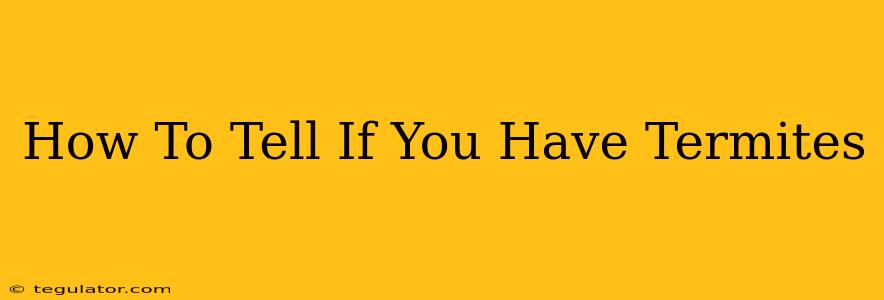Termites are silent destroyers, quietly munching away at the wooden structures of your home without you even knowing it. Early detection is crucial to prevent extensive and costly damage. This comprehensive guide will equip you with the knowledge to identify the telltale signs of a termite infestation and take appropriate action.
Understanding the Enemy: Types of Termites and Their Damage
Before we dive into identification, it's important to understand that not all termites are created equal. The most common types include subterranean termites, drywood termites, and dampwood termites. Each type exhibits slightly different behavior and causes unique damage patterns.
Subterranean Termites: The Most Common Culprit
These termites live in underground colonies and build mud tubes to access wood above ground. They're the most destructive type and are responsible for the majority of termite damage. Look for:
- Mud tubes: Thin, mud-like tunnels running along foundation walls, pipes, and other surfaces. These are their highways to food sources.
- Swarmers: Winged termites that emerge during swarming season (typically spring). These are reproductives trying to establish new colonies.
- Frass: Tiny pellets of termite droppings often found near damaged wood. They can be a light brown or dark brown color, depending on the wood type.
Drywood Termites: Independent Operators
Drywood termites don't require contact with the soil. They establish colonies directly within wood, causing extensive damage before detection. Signs include:
- Kickout holes: Small holes in wood where discarded wings from swarmers are visible.
- Frass: Similar to subterranean termites, but often found near the holes. It can be a coarser material than that of subterranean termites.
- Hollow-sounding wood: If you tap on wooden beams or furniture and it sounds hollow, it could indicate internal damage.
Dampwood Termites: Moisture-Loving Pests
These termites thrive in moist, decaying wood. They are less common than other types but can still cause significant damage. Look for:
- Visible damage in damp areas: Focus on areas with high moisture levels like bathrooms, leaking pipes, or areas exposed to rain.
- Frass: Similar to other types, but again, focus on damp locations.
Key Signs of a Termite Infestation: Beyond the Obvious
While the signs mentioned above are crucial, subtle indicators can often precede more visible damage. Pay close attention to:
- Sagging floors or ceilings: This might indicate significant wood damage underneath.
- Cracks in walls or foundation: While not always a direct sign, these could conceal termite activity.
- Discarded wings: Finding piles of discarded termite wings, often near windows or doorways, is a strong indication of swarming activity.
- Unusual sounds: If you hear rustling sounds within walls or wooden structures, it may indicate termite activity.
What to Do If You Suspect Termite Infestation
If you suspect a termite infestation, don't delay. Contact a qualified pest control professional immediately. They have the expertise and tools to conduct a thorough inspection, identify the type of termite, and recommend the most effective treatment plan. Remember, early detection is crucial for minimizing damage and preventing costly repairs.
Don't try DIY solutions. These can be ineffective and may even worsen the problem. Trust the experts to handle this delicate situation. A professional will provide a tailored solution addressing the specific type of termite, the extent of the infestation, and the best course of action for long-term protection of your property.
This guide provides general information, and professional advice is always recommended. Remember to be vigilant and proactive in protecting your property from these destructive pests.

